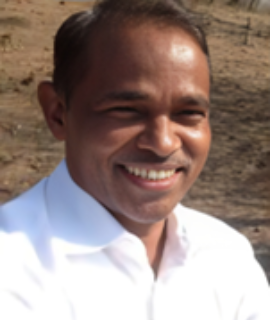Title : Yoga and prana dharna complete energy healing
Abstract:
In recent years, there has been a growing recognition of the holistic benefits of yoga therapy in addressing various physical, mental, and emotional health issues. The demand for qualified yoga therapists has surged, creating abundant career opportunities in this field. Yoga therapy is a specialized branch of yoga that utilizes its principles and practices to promote overall well-being and address specific health concerns. It involves personalized assessment and tailored practices to suit individual needs. Integrating various yoga techniques such as asanas (postures), pranayama (breathing exercises), meditation, and relaxation techniques helps alleviate physical ailments, manage stress, and enhance mental health. Among various techniques Dhyan& Prana Dharna is one of the most ancient practices in ancient Indian Scriptures. Pr??a, the life force that controls all that exists in these three worlds, as described in the Upanishads, is an essential concept. Energy, defined by physics as the capacity to do work, can neither be created nor destroyed but can change forms. Pr??a is the same as energy, electron flow, or something beyond the grasp of modern physics. The human body is operated by major five pranans, if we learn to master this PRANA and directed it to the various part of body we can HEAL the entire body. The Upanishads elucidate the concept of kundalini, a dormant spiritual energy coiled at the spine's base. Through yogic practices, particularly kundalini yoga, practitioners aim to awaken and channel this energy upward, traversing the chakras, and ultimately reaching a state of higher consciousness. This process is believed to lead to self-realization and a profound understanding of the interconnectedness between the individual soul (Atman) and the universal consciousness (Brahman). Meditation, a key component of yoga Upanishad, is presented as a gateway to transcending ordinary mind fluctuations and accessing higher states of awareness. Prana Healing, known as Pranic Healing, involves manipulating the body's energy fields to restore health. Practitioners use their hands to scan the patient's energy field, identifying and cleansing areas of negative energy, followed by energizing these areas with fresh prana. This practice aims to balance the body's energy, enhance its natural healing capabilities, and address physical and emotional issues. Prana healing is based on the premise that the body can heal itself when its energy is balanced and free flowing. Integrating these natural therapies into modern healthcare offers a complementary approach that can significantly improve patient outcomes. These practices emphasize a holistic view of health, where the body, mind, and spirit are interconnected. By focusing on the root causes of health issues rather than merely treating symptoms, these therapies promote preventive care and self-healing. In conclusion, integrating traditional medicine, ethnomedicine, and natural therapies such as Yoga, Marma therapy, frequency healing, and Prana healing into contemporary healthcare can provide a more comprehensive and effective approach to health and wellness. Their emphasis on energy balance, preventive care, and the body's natural healing processes makes them invaluable in enhancing the quality of healthcare. Continued research and integration into mainstream medical practices could yield significant benefits for global health outcomes, providing holistic and sustainable healthcare solutions.
Audience Take Away:
- Pran Manthan Kriya as an ancient Indian healing system and its practice as a drugless therapy
- How traditional Prana Healing can provide drugless therapy without any external instruments
- Opportunities for further research or teaching in the field of pranic energy and its applications
- Benefits of enhancing mental, physical, and spiritual capacity through pranic energy practices
- Methods to purify chakras and koshas to help cure or control mental and physical diseases



